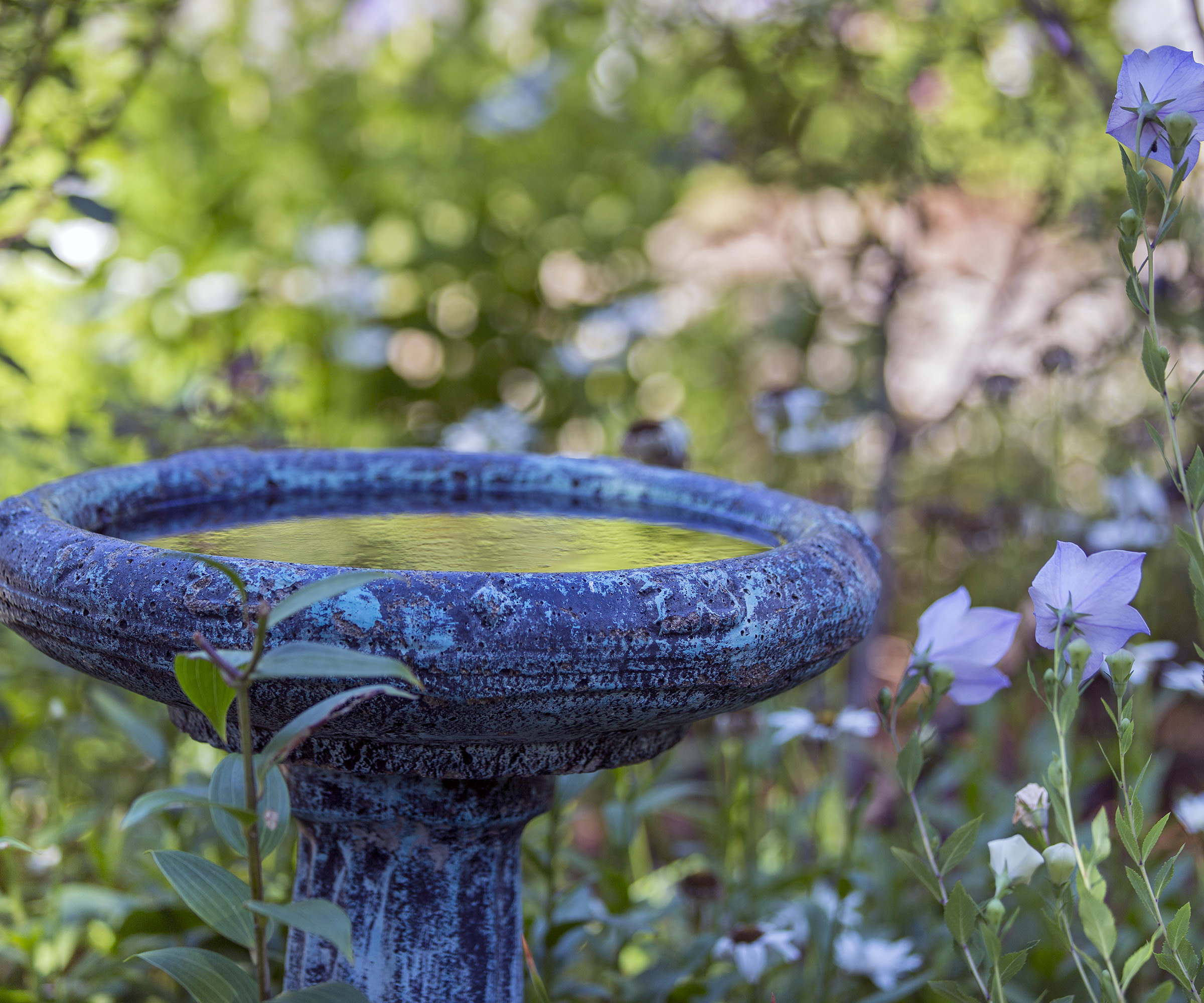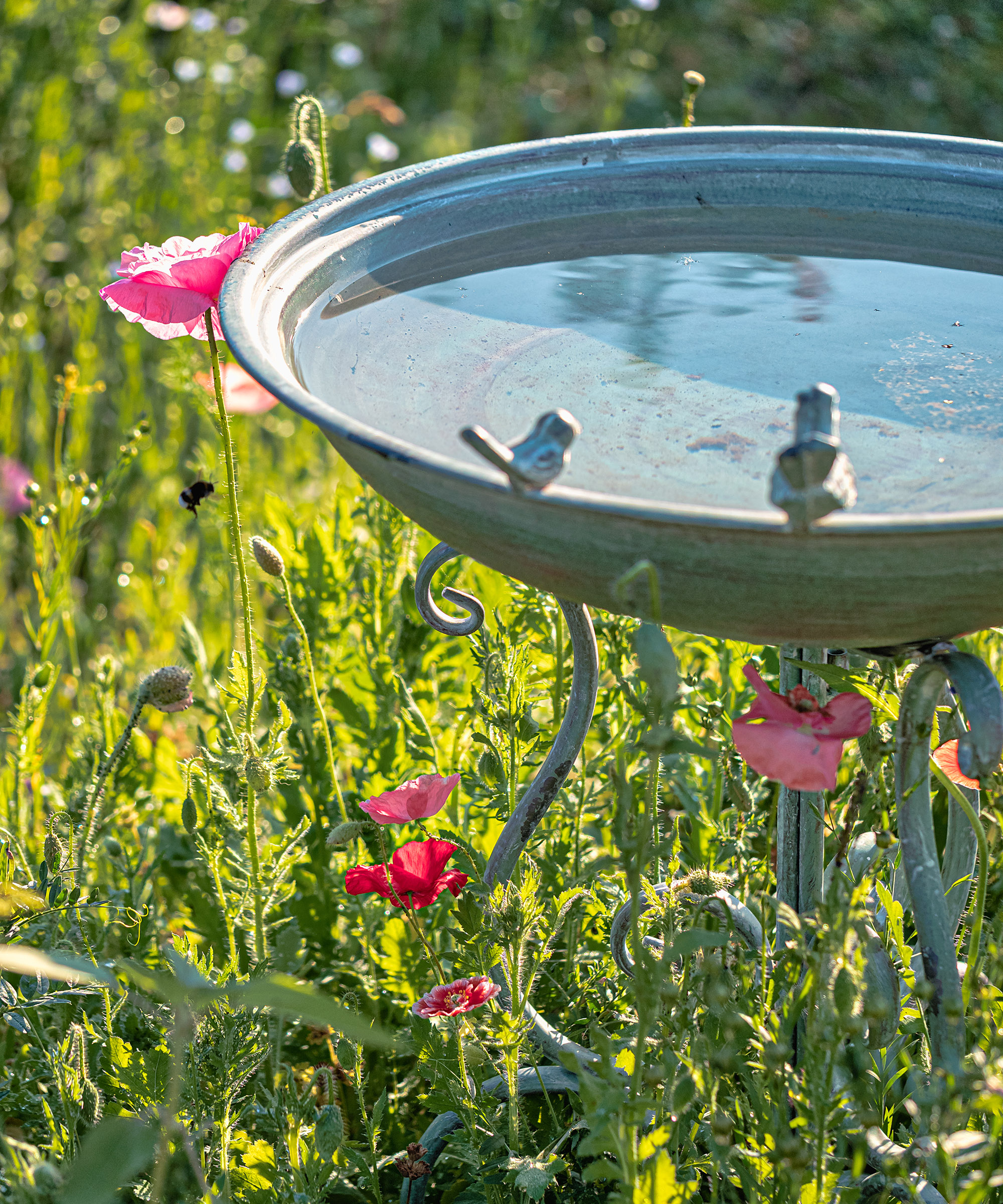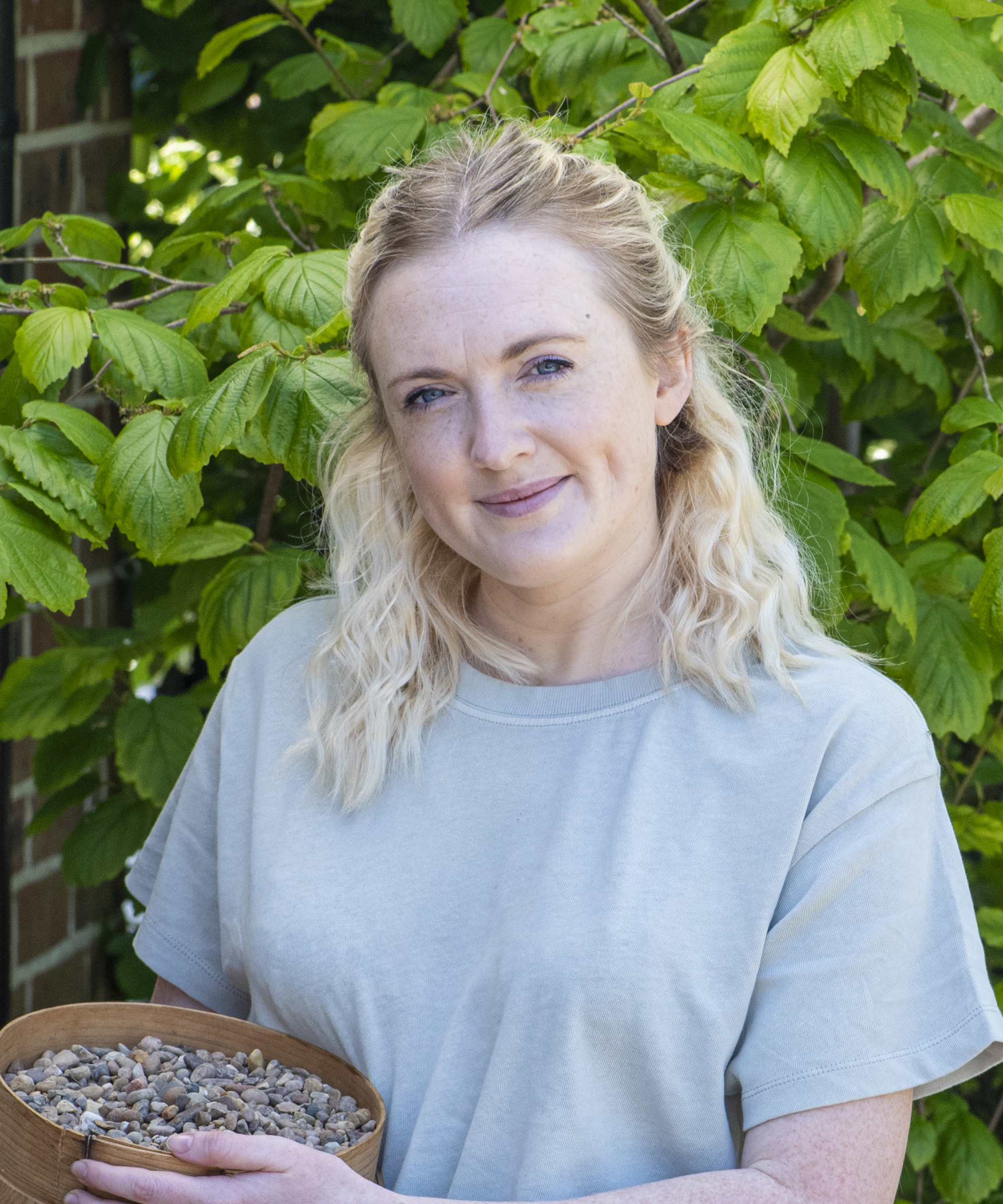How to clean a bird bath – and why it's essential to keep on top of this simple task
By cleaning your bird bath you can stop harmful bacteria spreading to birds and humans


Knowing how to clean a bird bath is an essential way to protect feathered friends, and ourselves, from harmful bacteria forming in dirty water. Though it might feel like one job too many, failing to do so can cause visiting birds to get sick from contaminated water.
And it's not only birds who will pay the price. 'Bird baths that are not emptied and refilled at least three times per week can become mosquito breeding areas,' explains Dan Reinking, Senior Biologist at Sutton Avian Research Center.
'Besides being annoying pests to homeowners, mosquitos can also transmit a number of diseases to both humans and birds. Dumping out any remaining water and refilling the bath with fresh water every other day, during mosquito season will prevent them from hatching in the bird bath,' he says.

Regular cleaning will keep your bird bath bacteria free
Why it's important to know how to clean a bird bath
'Water can be a limited resource for birds, especially during hot, dry summers and during weather below freezing, but bird baths are readily used by birds year-round for drinking and bathing,' says Dan Reinking. 'Stopping a bird bath from freezing and knowing how to clean a bird bath is the key to a bird bath being useful to birds.'
A step-by-step guide to cleaning a bird bath

Replace the water in your bird bath every few days
'Cleaning out your bird bath is vitally important as they can easily become dirty, and centers for breeding bacteria, which can then spread through local birds and wildlife,' says garden writer, Jill Morgan.
'Algae can form in baths with stagnant water,' adds Dan Reinking. 'A quick weekly scrub with a brush followed by a rinse and refill will help keep the bath free of algal growth. To use detergents or harsh chemicals would be a bird bath mistake, instead a weak vinegar solution can be used to help the cleaning process.'
- Rinse out the bath regularly to remove any build-up of bird droppings, algae, dead leaves and other debris, and refill with clean water.
- Give the bath a thorough clean every week, even during cold weather to help garden birds in winter. Scrub well to remove algae and other dirt. There are household disinfectants or cleaners specifically formulated for bird baths, but these need to be rinsed out thoroughly to avoid leaving any chemical traces. We suggest the far safer method of using one part vinegar mixed with nine parts water.
- If you have a heated bird bath, switch it off whilst you clean.
- As there is a small but real risk of infections like salmonella being transmitted to people, always clean the bird bath outdoors using separate utensils, wear gloves and wash your hands when finished.

Dan Reinking began birding at age 12, and for more than three decades has worked as a biologist with the nonprofit Sutton Avian Research Center in Oklahoma. He studies the ecology and distributions of birds, and has published two books about Oklahoma’s birds, and more than 250 newspaper columns about birds.

Jill Morgan has spent the last 20 years writing for Interior and Gardening magazines both in print and online. Titles she has been lucky enough to work on include House Beautiful, The English Home, Ideal Home, Modern Gardens and Gardeningetc.com.
FAQs
How to stop a bird bath turning green
'Place your bird bath in a shady position as this will help to reduce algae growth and slow the evaporation of the water,' says garden writer, Flora Baker.
'Change the water daily to prevent build-up of algae and be sure to scrub the inside of the bird bath thoroughly once a week. A solar-powered pond aerator like this NFESOLAR Solar Pond Aerator at Amazon will help to keep water moving and any slime from forming,' she says.

Flora has spent much of the last few years as a keen amateur gardener: honing her houseplant propagation skills, growing vegetables in buckets, and starting up a compost bin.
How often should you clean a bird bath?
'Your bird bath should be cleaned regularly, at least once a week, and the water replaced every day if possible. This is to prevent the build-up of feces and other contaminants, as well as diseases,' says garden writer Flora Baker.
'Birds are sensitive to our chemicals, however, so make sure to use a diluted solution of vinegar and water. Empty out all the stale water at a distance from the bird bath's location,' she says.
Is it OK to put bleach in a bird bath?
Bleach might clean your bird bath, but it is not safe for birds. Even if you rinse it well, a little leftover bleach can cause problems for their health. So, it’s best to steer clear of it.
Do pennies keep a bird bath clean?
No, pennies cannot keep a bird bath clean but it can slow down algae growth, and factors like water volume, sunlight, temperature, and water chemistry can determine how effective pennies are at keeping algae at bay.
If you have space, you could even install a water feature as part of your bird bath ideas, which keeps the water fresh and algae-free with constant movement.
Design expertise in your inbox – from inspiring decorating ideas and beautiful celebrity homes to practical gardening advice and shopping round-ups.

Teresa was part of a team that launched Easy Gardens magazine two years ago and edited it for some time. Teresa has been a Gardens Editor at Homes & Gardens, Country Homes & Interiors and Living Etc magazine since 2020 and has developed close working relationships with top garden designers, and has been exposed to an array of rich garden content and expertise.